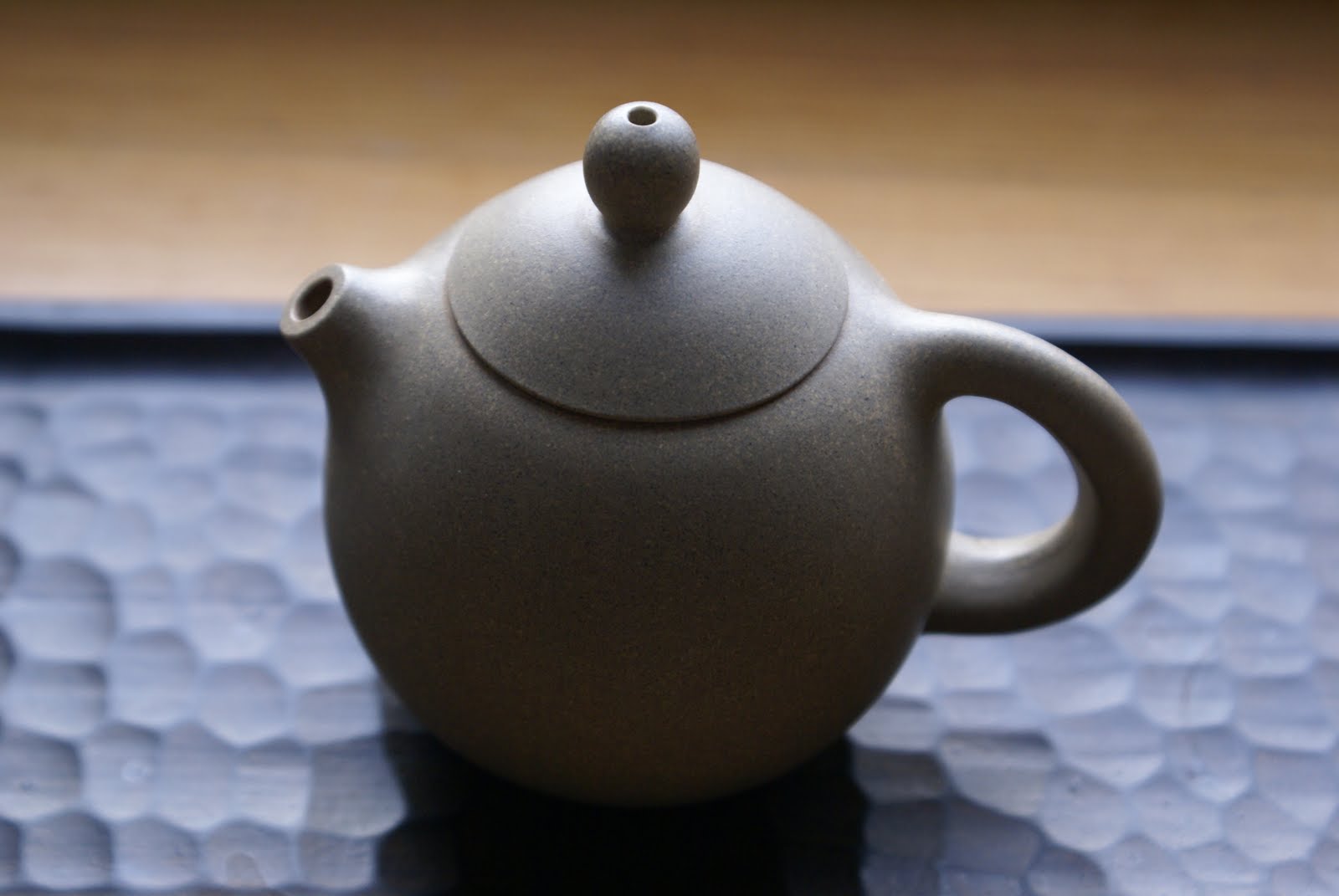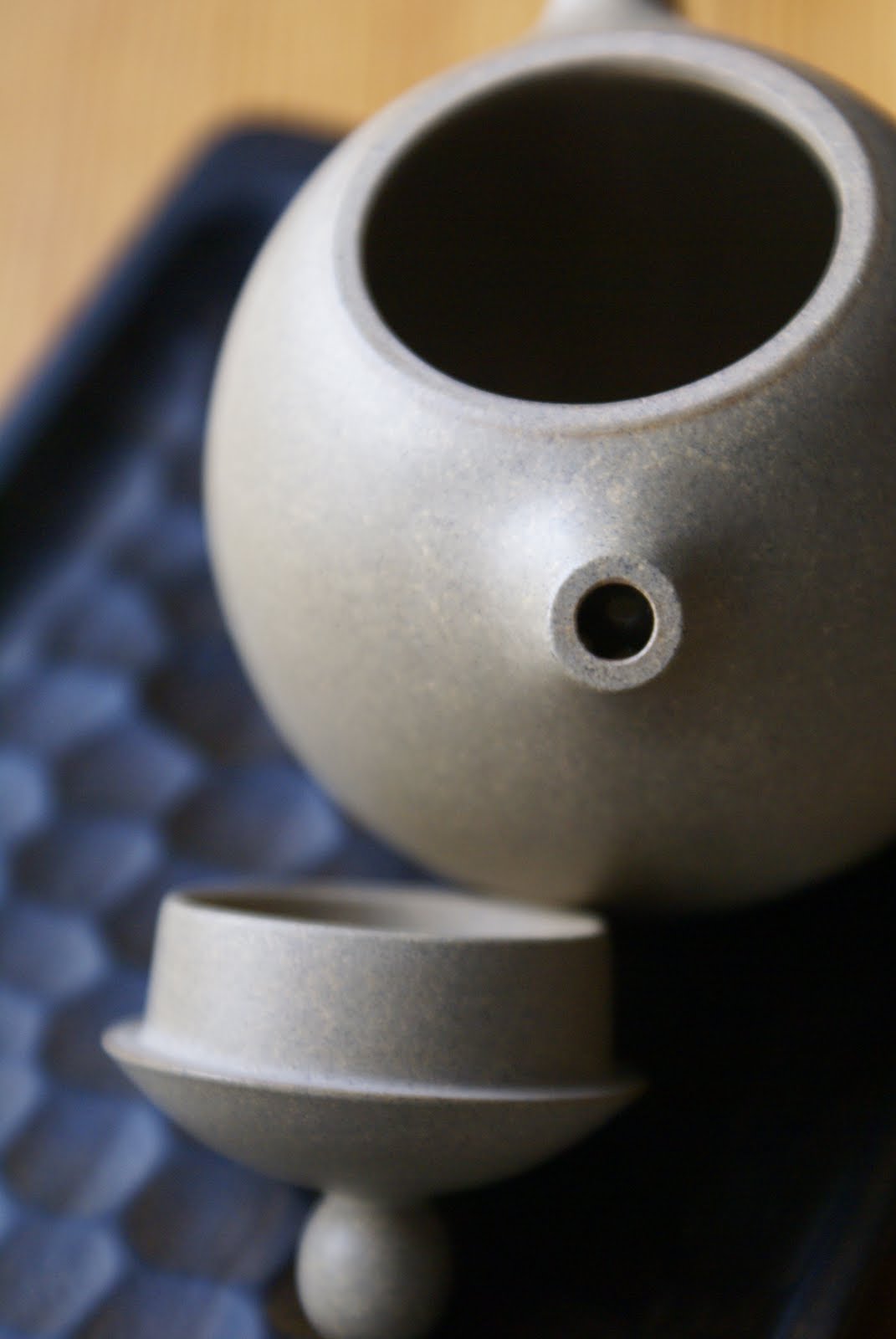
I have been looking for a Chinese clay pot to infuse my high mountain oolongs from Taiwan (and the little Anxi oolong from mainland China that I drink, as they are produced in a similar style). So far, I’ve brewed these rolled-leaf teas in a porcelain gaiwan, but I’ve been looking to expand the horizons of these teas a bit.
I have been facing two problems. One is that these oolongs are very high in aroma, often with lifted floral and exotic fruit notes, which tend to be slightly handicapped by brewing in certain types of clay (in my experience); the choice of a Yixing-style teapot usually aims at improving your tea’s mouthfeel more than anything. The mouthfeel of gaoshan oolong is important to me but so is the aroma.
The other dilemma is that some of those oolongs are very slightly oxidised and unroasted, essentially bringing them fairly close to a green tea, while others have higher oxidation and, importantly, a medium to high roast. My teapot of choice would need to work equally well with both types. Is it at all possible, I wondered?
Recommendation for rolled oolong teapot usually steer towards tighter, harder, less porous clays whose effect on the tea is a little more discreet and gentle. Zhuni pots are one match that seems to be recurrent among experts. But I already own a zhuni pot that I felt wasn’t doing a great job with the unroasted types.
Placing an order for 2009 puer recently with Yunnan Sourcing, I browsed their selection and found some green clay teapots made of Benshan clay (similar to duanni clay I understand, but more green-coloured). Green clay tends to get mixed reviews. Some people like it, while others dismiss it altogether even going as far to say it’s only good for display purposes. This ‘dragon egg’ shaped teapot was $35 so I thought I’d give it a go. It is not a masterpiece of craftsmanship but a solidly built piece of equipment with thick, temperature-retaining walls and a swift pour.

I must say it’s really performing well. I wasn’t expecting miracles but the difference in the quality of the brew is very clear from beginning to end. It actually happens to fit my purpose very well indeed, performing equally well with the unroasted and roasted oolongs.
Here are some summarised tasting notes from brewing two identical teas in both porcelain gaiwan and Benshan teapot. Parameters were 3.5g of leaf for 120ml boiling water, infusions of 40s and 20s (I didn’t continue the experiment beyond the second brewing).
2008 Spring Fenghuang ‘Verger de Montagne’ oolong (purchased for Teamasters) The gaiwan produces an unremarkable lid aroma and a simple brew aroma but the taste is very good, balanced, with plenty of yun sweetness. However on the finish there is quite a vegetal edge to this slightly stale 2008 tea perhaps. A second brew is again a very good quality cup, very nicely composed with floral-fruity sweetness and buttery density. Now more balanced, less vegetal than #1.
In the Benshan pot, there is a considerable difference already in the aroma of dry leaves warming in the pot: while the gaiwan is emphasising the caramel and light roast, Benshan pot is exuding a lovely floral, clean, sweet aroma. Brew colour is also visibly darker. A sweet, fat, floral buttery lid aroma. The brew is obviously a little stronger than in the gaiwan, slightly more drying, less immediate and buttery-smacky but admittedly a little more complete. It definitely rounds off the vegetal edge. In a second 20s brewing, the difference is less pronounced, though the Benshan pot colour is still a little darker golden, and there is more dark honey spice sweetness, and obviously more complexity.
Very similar colour of #2 brew in gaiwan (left) and Benshan pot (right).
2009 Spring Dongding ‘Classique’ [medium roast] oolong (purchased from Teamasters)
Here again the gaiwan gives an entirely satisfying brew with a balanced roast, good creaminess both in aroma and flavour, and a bit of dryness on end. But the second brewing might have been just a bit too long here with 20 seconds, with the tea showing quite vegetal, drying and a little chaotic.
In Benshan clay, the warmed dry leaf aroma before you pour water in is more exciting, with a more succulent roastiness and a touch of raspberry. And there is definitely more precision in the brew aroma, where the roast is mellowed and there are finer, subtler notes of white butter. It is a rounder, richer, more generous tea from this pot. A second 15s brewing is much heftier here, dark-coloured into orange, and dominated by roast, but seemingly less overbrewed and unbalanced than in the gaiwan.
Expired leaves of the 2009 Dongding Classique: what a skillful roast here.
Bottom line: the Benshan clay pot is doing a great job in removing some of the hard edges of the tea (though admittedly both teas I chose were extremely high quality and hardly in need of ‘correction’, so we’re talking minor fine details of aroma and flavour here). It works well both with the drying-tannic vegetality of unroasted types, and the throat-drying action of the less well balanced roast in the roasted types. At the same time the texture is enhanced, and the tea tastes rounder, more voluminous and complete. Importantly, my fears about the aroma being diminished found no confirmation. If anything, the aroma was more complex and precise from the clay pot than from the gaiwan. It was an interesting experiment and I think for any more inquisitive session, I will now be using the Benshan pot as a standard.
Source of items: both teas and teapot were my own purchases.